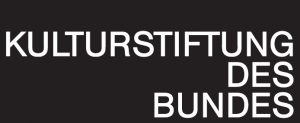The exhibition CONGO STARS will show popular painting dating from the 1960s to today, side by side with contemporary art using other artistic means. In cooperation with the Kunsthaus Graz, the Royal Museum of Central Africa Tervuren, the Iwalewahaus in Bayreuth and PICHA in Lubumbashi, about 150 works will be presented by about 70 Congolese artists who live in Kinshasa, Lubumbashi, Brussels, Aachen or Paris.
The conceptual departure point for the exhibition is Fiston Mwanza Mujila’s novel Tram 83, in which the author describes an imaginary place which may refer to the social reality of Congolese metropolises but cannot be associated with any concrete city. The exhibition also builds an imaginary place that draws on different realities and in doing so interweaves politics, exploitation, corruption, violence, religion, mythology, spirituality, star cult and everyday life, as well as pleasure, passion and sensual desire.
The tour of the exhibition unfolds along six chapters – Street, Bar, At home, Mythology, Stars, Exploitation. The real and imaginary places and spaces which are dovetailed have community- and identity-building functions and condense aspects of the fictional. A timeline with a great diversity of music stations, texts and originals provides information on the history of the events and on the context of Congolese art.
The exhibition title addresses popular culture, stars and heroes of Congolese society. It also refers to the stars on the national flag, the changing political systems and regimes, for not only the name of today’s Democratic Republic of the Congo was altered according to the state doctrine, but also the appearance of the national flags. CONGO STARS even points to an actual ‘reaching for the stars’, that is, Zaire’s short-lived but ambitious space programme under President Mobuto in the 1970s, which the latter attempted to implement with the support of the German company OTRAG – Orbital Transport Raketen Aktion Gesellschaft.
CONGO STARS however is anything but a “national” show of achievements of the Democratic Republic of the Congo. Instead, it mixes the real experiences, projections, dreams and longings of artists who live in the Congo and in Europe. What is also tangible for the visitor is not least the longing for a positively-connoted social space located territorially and temporally ‘outside’ – a perspective for the future.
Artists of the exhibition
Alfi Alfa (Alafu Bulongo), Apollo, Prince Badra, Sammy Baloji, David N. Bernatchez, Kiripi, Gilbert Banza Nkulu, Chéri Benga (Hyppolite Benga Nzau), Junior Bilaka, Bodo (Camille-Pierre Pambu Bodo), Claude Bosana, Dominique Bwalya Mwando, Chéri Cherin, (Joseph Kinkonda), Trésor Cherin, (Nzeza Lumbu), Revital Cohen & Tuur Van Balen, Revital Cohen, Edisak, Ekunde (Bosoku), Sam Ilus (Mbombe Ilunga), Jean Kamba, Eddy Kamuanga Ilunga, Kasongo, Jean Mukendi Katambayi, Kayembe F, Aundu Kiala, Bodys Isek Kingelez, Ange Kumbi, Hilaire Balu Kuyangiko, Lady Kambulu, Gosette Lubondo, Lukany, Ernest Lungieki, George Makaya Lusavuvu, Tinda Lwimba, Michèle Magema, Maho Zaire, Mampela, Manuva Mani, Maurice Mbikayi, Mbuëcky Jumeaux (oder: Mbvecky Frères), Micha JP Mika (Jean Paul Nsimba), Mega Mingiedi Tunga, Moke (Monsengo Kejwamfi), Moke-Fils (Jean Marie Mosengo Odia), Mson Becha Shérif Decor, Musondo, Vitshois Mwilambwe Bondo, Nkaz Mav, Vincent Nkulu, Chéri Samba (Samba wa Mbimba N’Zingo Nuni Masi Ndo Mbasi), SAPINart (Makengele Mamungwa), Monsengo Shula, Sim Simaro (Nsingi Simon), Soku Ldj, Maître SYMS (Bayangu Mayala), Marciano Tajho, Tambwe, Tshibumba Kanda Matulu, Pathy Tshindele Kapinga, Turbo
im cooperation with
Kunsthaus Graz, Königliches Museum für Zentralafrika Tervuren, Iwalewahaus in Bayreuth, PICHA
Curators
Sammy Baloji, Bambi Ceuppens, Fiston Mwanza Mujila, Günther Holler-Schuster and Barbara Steiner.
gefördert im Fonds TURN der


Recent Comments